The Moon is the most extensively studied planetary body outside of Earth. Despite this, its formation mechanism is still a mystery.
Transcript
Astronomy & Planetary Science
The Formation of the Moon
Zoe Morland:
Have you wondered how the Moon was made?
The Moon is the most extensively studied planetary body outside of Earth. Despite this, we’re still not sure how it was formed.
Past Theories
Hypotheses have bounced around the scientific community for decades, evolving under the influence of popular opinion.
There’s George Darwin’s 1879 fission model in which a rapidly spinning early-Earth expelled material, that later coalesced into the Moon.
And also, Gerstenkorn, H.’s 1955 Capture model, which claimed the Moon formed independently from Earth and was subsequently captured by Earth’s gravitational field. However, then came a crucial time in human history that initiated a major reform in what we believed was true about the Moon.
The Apollo and Luna space mission programmes that took place between 1959 and 1976 acquired the first solid materials from the Moon’s surface, alongside more detailed remote sensing data than ever gathered before. The analysis of rocks samples returned from the Moon revealed that the Earth and Moon were compositionally similar.
Information gathered during this golden age of space exploration proved crucial for the demise of past theories on the Moon’s formation, because none could account for all the data we have now.
Even later theories that took into account the compositional similarity between the Moon and Earth, such as Ted Ringwood’s 1969 binary formation model that hypothesized that the Moon formed simultaneously with Earth as a sister planet, did not fully explain for everything. With every new bit of information that is gained, plot holes and continuity errors get exposed resulting in old hypotheses getting discarded. With this, the scientific community looks for new answers, each one attempting to explain the evidence more completely than the last.
The only hypothesis to stand the test of time, providing the best explanation of current data is...The Giant Impact Hypothesis.
Giant impact Hypothesis
In 1975 Dr William K. Hartmann and Dr Donald R. Davis first presented the giant impact theory for the formation of the Moon. They suggested that a Mars-sized body named Theia impacted the early-Earth generating a large plume of material, which surrounded Earth as a disk to later coalesce and form the Moon we observe today. This theory can account for the core constraints as well as more specific characteristics of the current Earth-Moon system, which were unexplained by the pre-space exploration theories.
Multiple impact Hypothesis
However, like before, floors can still be found. It was Ringwood, the founder of the earlier disproved binary formation model, who exposed the flaws in the giant impact hypothesis and attempted to reimagine the theory. He stated in his 1989 paper “Collisions by much smaller high velocity [bodies] at a very late stage of accretion were probably responsible for ejecting… material from the Earth’s mantle” which later coalesced into the Moon. This formed the basis of a modified Giant Impact hypothesis called The Multiple Impact Hypothesis.
It states that a sequence of bodies, between the sizes of the Moon and Mars, impacted the early-Earth, generating debris disks that coalesced into moonlets. These moonlets migrated away from the early-Earth until they settled into an orbit. Successive impacts into the Earth’s surface at several million-year intervals created more moonlets that migrated into similar orbits. As the orbit path got busier collisions occurred causing the moonlets to coalesce into larger moonlets. Over time, enough collisions are thought to have occurred to generate the Moon we observe today.
This hypothesis has gained recent support from the scientific community because it solves many issues that arose after the single giant impact hypothesis and it presents a more reliable mechanism for the formation of the Moon.
However, we must not be naive enough to believe that just because this theory is currently the least problematic, that it will remain this way after future findings. This highlights an important cycle within science: a question is asked, hypotheses are designed, and they are disproven by new findings creating the need once again for new hypotheses. This topic is a clear representation of how many times this cycle is repeated within the scientific community and how truly unsure we are about the vital events in history.
-End of mini-documentary-
Past theories
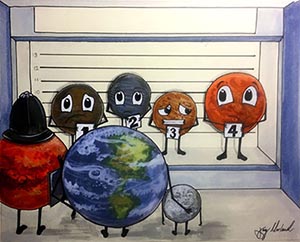 Hypotheses have bounced around the scientific community for decades, evolving under the influence of popular opinion. Early theories included: George Darwin’s 1879 fission model, in which a rapidly spinning early-Earth expelled material, possibly from the region now occupied by the Pacific Ocean, which later coalesced into the Moon; and the capture model, initially investigated by Gerstenkorn, H., 1955, claiming the Moon formed spatially distinct from Earth and was subsequently captured by Earth’s gravitational field. Without evidence to the contrary, Darwin’s theory prevailed and was still taught in schools during the Apollo era in the late 60s early 70s.
Hypotheses have bounced around the scientific community for decades, evolving under the influence of popular opinion. Early theories included: George Darwin’s 1879 fission model, in which a rapidly spinning early-Earth expelled material, possibly from the region now occupied by the Pacific Ocean, which later coalesced into the Moon; and the capture model, initially investigated by Gerstenkorn, H., 1955, claiming the Moon formed spatially distinct from Earth and was subsequently captured by Earth’s gravitational field. Without evidence to the contrary, Darwin’s theory prevailed and was still taught in schools during the Apollo era in the late 60s early 70s.
However, the acquisition and subsequent analysis of Apollo samples uncovered a crucial compositional similarity between lunar and Earth rocks leading to the capture model being abandoned. Moreover, advanced models were used to disprove the fission model as it appeared physically impossible. Therefore, a lack of reasonable hypothesis initiated a re-evaluation of the Moon’s formation.
The demise of the past theories stresses the need for new ideas.Ted Ringwood’s 1969 binary formation model (or “precipitation” hypothesis), was the first model to take into account the compositional similarity between the Earth and the Moon discovered from the Apollo samples. It stated that the Moon formed simultaneously as a sister planet to Earth. However, this model neglected to account for the current angular momentum of the Earth-Moon system and the presence of a very small iron core in the Moon.
In summary each past theory had its strengths; however, the exposure of endless plot holes and continuity errors have resulted in their catastrophic rejection.
Yet again, another hypothesis for the Moon’s formation was craved by the scientific community. However, this time it must satisfy the identified core constraints defined by current observations:
- Conversation of angular momentum - requiring the angular momentum for the system before the Moon’s formation to be equal to the angular momentum of the Earth-Moon system today.
-
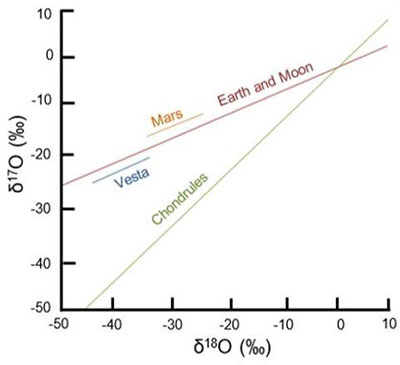 Fig. 1: Comparison of the oxygen isotope ratios between different bodies showing how they can be differentiated. The Moon and Earth plot along the same line.
Structure of the Moon – the Moon has a much lower average density than the Earth, due to it having a very small iron core compared to its mantle, therefore the mechanism must account for a lack of iron present at the time of formation.
Fig. 1: Comparison of the oxygen isotope ratios between different bodies showing how they can be differentiated. The Moon and Earth plot along the same line.
Structure of the Moon – the Moon has a much lower average density than the Earth, due to it having a very small iron core compared to its mantle, therefore the mechanism must account for a lack of iron present at the time of formation. - Surface composition of the Moon – presence of an anorthosite (low density rock made of plagioclase feldspar and mafic minerals) crust on the surface of the Moon, likely to have derived from the crystallisation and subsequent floating of anorthositic rocks in a magma ocean to form an anorthosite crust on the surface. Therefore, a new hypothesis must result in the formation of a magma ocean.
- Matching oxygen isotopic signature – Differences in oxygen isotopic ratio trends are indicative of different planetary bodies, however it is observed that the Moon and Earth’s oxygen isotopic ratios plot on the same line compared to other planetary bodies (see Fig. 1). Therefore, a new hypothesis must ensure the formed Earth and Moon have similar isotopic ratios, which can be achieved through deriving from the same material and undergoing similar fractionation.
Through time hypotheses have increased in resolution and complexity attempting to satisfy the core constraints as well as finer more detailed constraints that have arisen to question each hypothesis as it passes. Since the Apollo missions only one hypothesis has stood the test of time, making it the current prevailing theory.
Giant impact Hypothesis
A single giant impact is the only theory to survive the Apollo era In 1975 Dr. William K. Hartmann and Dr. Donald R. Davis first presented the giant impact theory for the formation of the Moon. In a nutshell, they suggested that a Mars-sized body named Theia impacted the early-Earth generating a large volume of ejecta, which surrounded Earth as a disk to later coalesce and form the Moon we observe today (see Fig. 2). It is thought that this phenomenon occurred in the much busier early history of the solar system (perhaps within the first 60-100 million years), when impacts between planets clearing out their orbits were frequent in comparison to today.
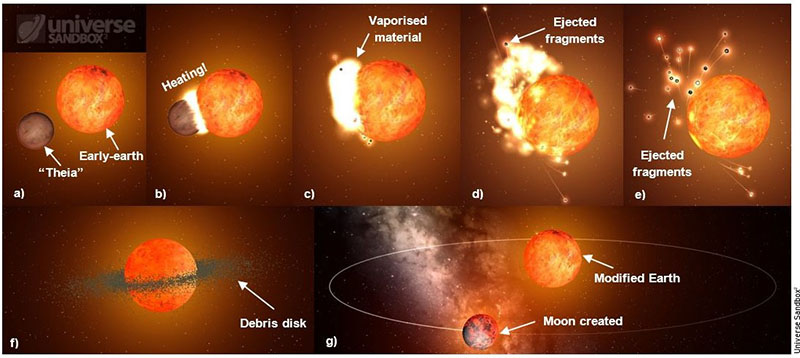 Fig. 2: Simple artistic step-by-step representation of the collision hypothesis model for the formation of the Moon over approximately 10s to 100s of thousands of years using Universe Sandbox. a) Mars-sized object (Theia) impacts a hot early-Earth at 45 degrees, within the first 100 million years of the solar system. b) initial impact displaying immense heating from the compression of Theia, causing vaporisation of Theia and early-Earth material, c) impact knocks the early-Earth titling its axis of rotation (changing its obliquity), excavation begins as vaporised and solid material is ejected from the impact site, d) ejected solid fragments and vaporised material spread further from the impact site, e) vaporised material dissipates and cools leaving larger ejected fragments to spread from the impact site, f) ejected material organises into a debris disk surrounding the Earth, g) accumulation of hot debris material into a hot early-Moon with a magma ocean, orbiting around a hot modified earth.
Fig. 2: Simple artistic step-by-step representation of the collision hypothesis model for the formation of the Moon over approximately 10s to 100s of thousands of years using Universe Sandbox. a) Mars-sized object (Theia) impacts a hot early-Earth at 45 degrees, within the first 100 million years of the solar system. b) initial impact displaying immense heating from the compression of Theia, causing vaporisation of Theia and early-Earth material, c) impact knocks the early-Earth titling its axis of rotation (changing its obliquity), excavation begins as vaporised and solid material is ejected from the impact site, d) ejected solid fragments and vaporised material spread further from the impact site, e) vaporised material dissipates and cools leaving larger ejected fragments to spread from the impact site, f) ejected material organises into a debris disk surrounding the Earth, g) accumulation of hot debris material into a hot early-Moon with a magma ocean, orbiting around a hot modified earth.
- The Earth-Moon system’s high angular momentum - satisfied by the combination of the early-Earth and impactor’s mass and rotational velocity, as well as, the impact velocity and off-centre collision.
- The Moon’s depletion in iron - caused by the ejection of mostly mantle material from the early-Earth.
- The accretion of very hot material from the impact would generate a body of molten material, satisfying the constraint that the initial stages of the Moon had to be a magma ocean in order to derive the predominantly anorthosite crust we observe today.
- The Earth and Moon’s oxygen isotopic signature similarity, suggests they formed from similar material, which is satisfied by the mixing that would occur during a giant impact.
- Earth’s current obliquity (axial tilt) - caused by the large-scale off-centre impact knocking the Earth over slightly.
- The Moon’s depletion in volatiles (elements that easily evaporate into gases) - due to volatile escape under the high energies and temperatures of the giant collision.
- The Moon’s enrichment in refractory elements – due to these elements preferentially condensing into dust under the high temperatures of the collision, to later accrete to form the Moon.
What is tidal force? Mutual gravitational attraction of the moonlets and the early-Earth as well as their difference in rotational velocity cause an energy transfer from the early-Earth to the Moon. This results in very minor slowing of the early-Earth’s rotation and an increase in the moonlet’s orbital energy, which causes the moonlet to move further away from the early-Earth to conserve the energy balance. This tidal force reduces as the distance between the bodies increases, therefore the moonlets initially accelerate away from the early-Earth, then slow down and settle at a distance called the Hill radius.
Multiple impact Hypothesis
Discover more about the Moon
-
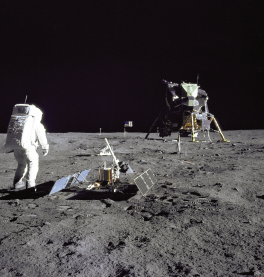
Apollo 11 and 50 years of research on Moon rocks
Read now to access more details of Apollo 11 and 50 years of research on Moon rocksThe first Moon landing is arguably the most important event for humankind. Dr Mahesh Anand and Dr Andrew G Tindle, shed light on the work which has taken place with the Moon rocks taken from that mission.
Article
Level: 1 Introductory
-
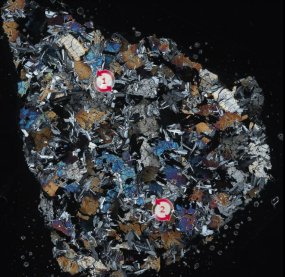
Explore Moon rocks collected from the first Moon landing
Take part now to access more details of Explore Moon rocks collected from the first Moon landingUse our Virtual Microscope to examine a selection of Moon rocks collected by Neil Armstrong and Buzz Aldrin, from the Apollo 11 mission in 1969.
Activity
Level: 1 Introductory
More FREE resources on moons
-
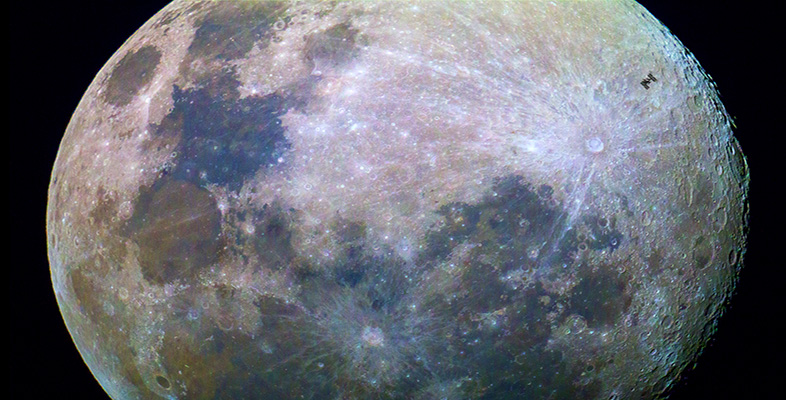
The Moon
Learn more to access more details of The MoonAs the only planetary body everyone is familiar with seeing in the sky, the Moon has long been an object of fascination and speculation. This free course will teach you about the nearest planetary body to Earth: the missions to the Moon, the basic facts of its composition, the cratering on its surface, and the ancient eruptions that flooded many...
-
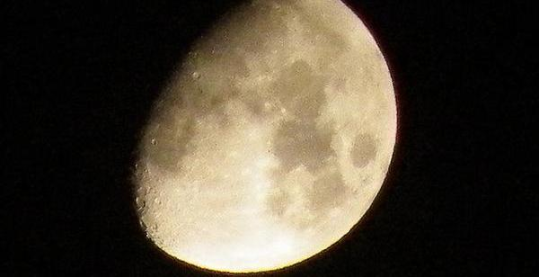
Moon Trumps: Pitch satellite against satellite
Take part now to access more details of Moon Trumps: Pitch satellite against satelliteBecome a master of the universe by winning Moon Trumps.
-
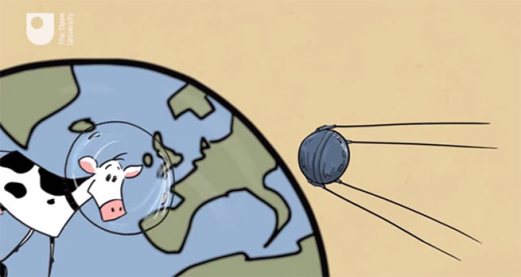
Mythbusting moons
Watch now to access more details of Mythbusting moonsWould we have tides if we had no Moon? Is a ‘supermoon’ an important event? Can moons have moons? Enjoy this short animation.
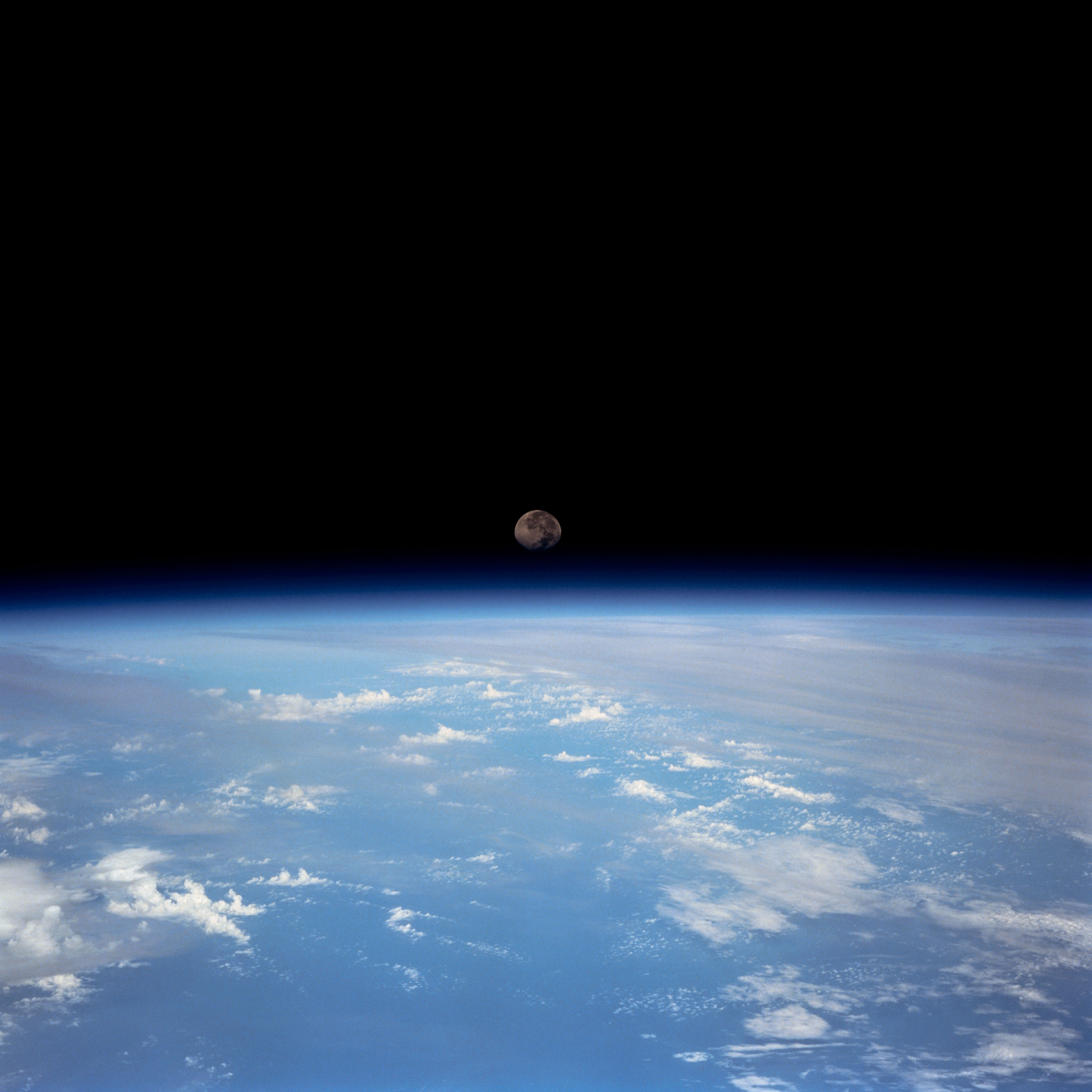
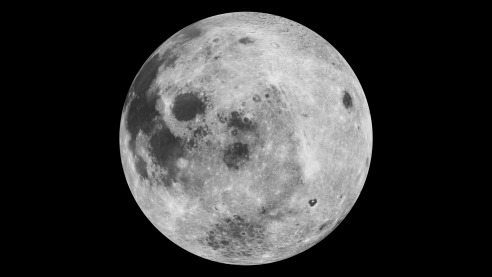
Rate and Review
Rate this video
Review this video
Log into OpenLearn to leave reviews and join in the conversation.
Video reviews
My Theorie is this the Moon was already created at the same time as earth and both shared the same orbit around the sun.
I think the moon at such is a failed planet in he was the other side and was much smaller so he couldn't make an iron core.
But what's that happened but there's the moon slightly faster at the Earth around the sun in the moon over time caught the Earth up and impact slightly on the side in our Earth
This moment the moon lost its momentum or spin and lost speed and velocity to escape of the gravity force from Earth.
And I think when you're looking for life on another planet like us then we have to look for a planet there is in the in the Golden orbit the have large moon like us
I think the moon has more involvement to create life and or Earth.
We know the Moon was much closer to Earth in the beginning time this means the moon put the mass and water much higher over the surface from Earth so that water can stay in little Ponds and puddles and give the monocles time to create life.